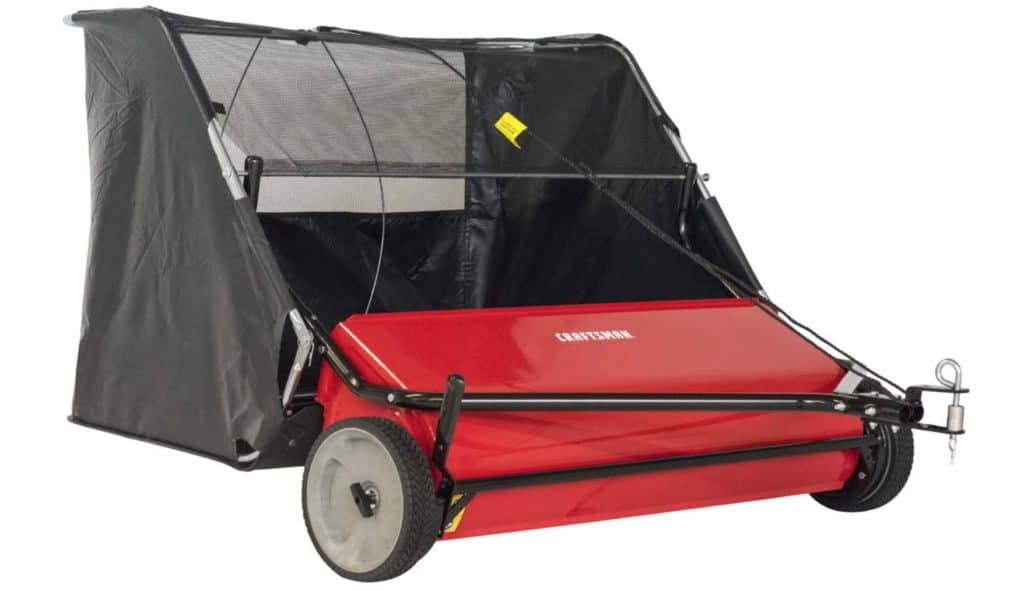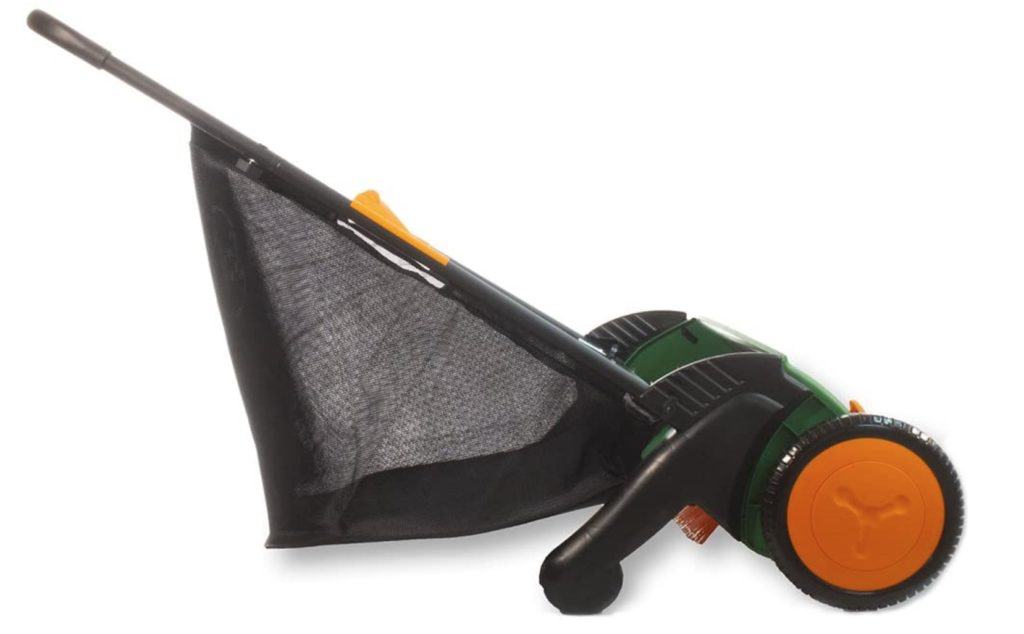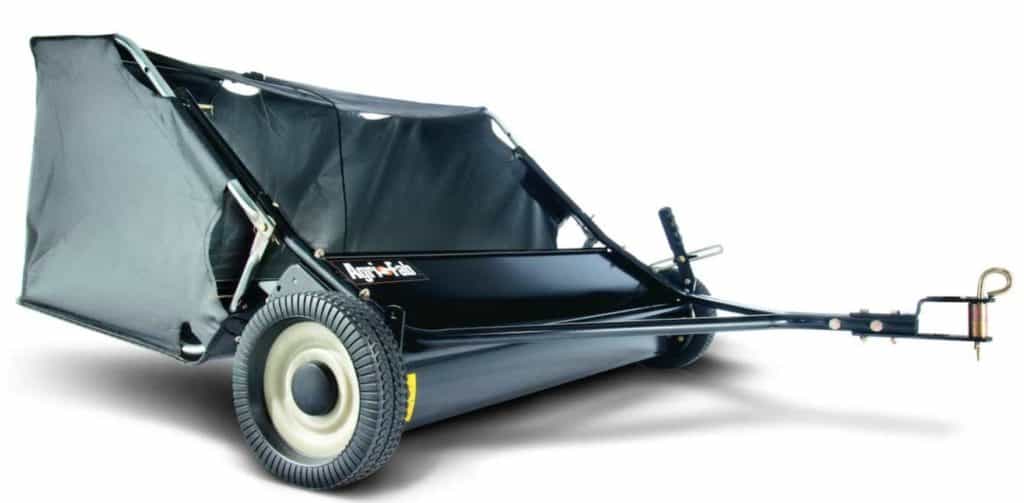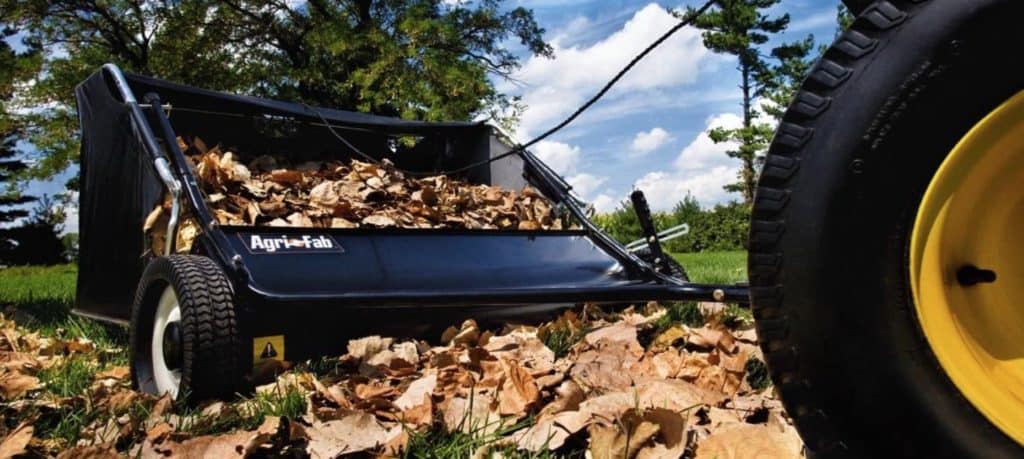Let’s face it, raking is tedious — it’s one of the lawn tasks that is a real grind, right up there with shoveling the drive way and digging out fence posts. You can get a leaf blower, but those are messy and loud, or you can mow your lawn, but if you have an electric lawn mower or a small walk-behind, it doesn’t have the power to mulch leaves.
What’s the solution? It just might be a lawn sweeper.
What Is A Lawn Sweeper?
Many of us have seen a lawn sweeper before and had little to no idea what it was. It’s easy enough to gather that it’s basically an automatic, walk-behind rake, but what’s it called and who sells them?

Personally I had always understood a lawn sweeper to be a tool that was towed by a lawn mower or tractor. And I usually assumed the to be aerators and/or dethatchers, but that’s not all they can be.
A lawn sweeper is a walk-behind or tow tool that picks up leaves, twigs, pine needles, bark chunks, grass clippings, bush clippings, and anything else that might have fallen on your lawn. A typical walk-behind sweeper is about 26″ wide, or about the width of the blade of a tractor mower but wider than your standard 21″ walk-behind mower.

A sweeper works by spinning a brush or a set of brushers that pushes debris up into a hopper. This is effective with light stuff, like leaves, bark, and sticks, but less so with branches that can get stuck in the bristles. Sweepers also work poorly with rocks, nuts, acorns, pinecones, and anything wet. Typically you can expect about 75% pickup on the first pass, with extra passes required to get a fully clean lawn.
Lawn sweepers can be walk-behind (aka push, even though they might be self-propelled) or tow style, which would get pulled by a small tractor or ride-on mower. The tow models can get up to about 42″ wide, giving you serious coverage and making short work of fall leaves. Push sweepers are gas or electric powered and have a a motor where two behind units don’t need a motor and rely on gears in the wheels to spin the brush.
Most sweepers will work with a dethatcher attachment, giving you more usage of the device. Some will work with a lawn aerator as well, those this is typically just the larger tow models. Some models will work with a fertilizer spreader as well, but as with the aerator, you’ll want to do your research and see if a specific model does this as well as price out the attachments as they might cost around half the price of the sweeper.

How Much Does A Sweeper Hold?
A large, tow lawn sweeper will have a capacity of about 22 cubic feet, or about the capacity of three 50 gallon garbage cans. Of course, things like sticks and leaves tend to be mostly empty space when you collect them, so can typically a get full 50-gallon trash bag out of one load of your tow sweeper.
Because this isn’t very efficient, many people just dump the contents of their sweeper at a spot in their yard, in their mulch pile.
The whole process can be a lot more space efficient if combined with a leaf mulcher, which will chop up the contents of a full-size lawn sweeper in about a minute, leaving you with a smaller volume of debris, which will be more efficient to dispose at your town’s drop off, much less to collect if your down does fall leaf collection, and will turn into dirt more quickly when left on your mulch pile.
Using a Lawn Sweeper
Generally you’ll want to use a lawn sweeper when it’s completely dry out, when the lawn is dry (after the dew), and when there is minimal wind. You’ll want to set your tractor or mower on a medium speed, and expect to do 1 pass on lightly covered areas and 2 on heavy leaf fall zones.
You can go over patios and sidewalks, but you should area gravel areas and mulched paths, as the spinning brushes will disrupt them.
While working, make sure to empty the bin of the sweeper frequently. The sides of most sweepers if a cloth-like fabric that can wear out and even puncture. Wear-and-tear will be greatly reduced if the sweeper isn’t frequently used at or near its maximum holding capacity.

